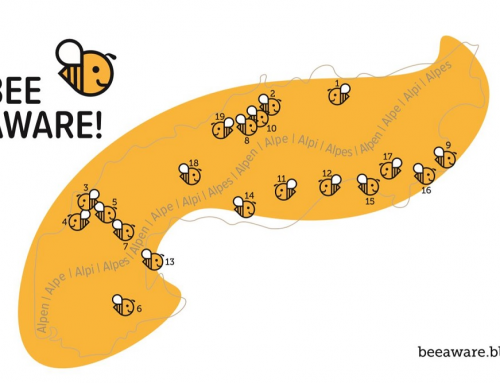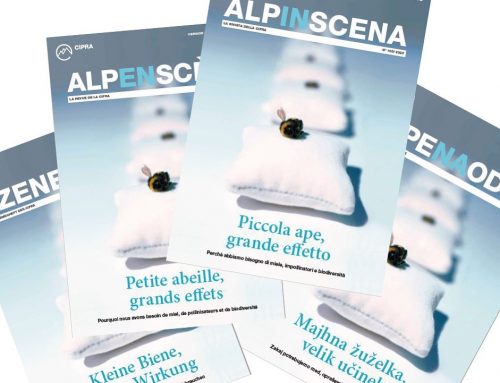The C code for LDA from David M. Blei and co-authors is used to estimate and fit a latent dirichlet allocation model with the VEM algorithm. 0000007971 00000 n % Implementation of the collapsed Gibbs sampler for Latent Dirichlet Allocation, as described in Finding scientifc topics (Griffiths and Steyvers) """ import numpy as np import scipy as sp from scipy. >> Do new devs get fired if they can't solve a certain bug? the probability of each word in the vocabulary being generated if a given topic, z (z ranges from 1 to k), is selected. 0000002915 00000 n 0000001484 00000 n 0000133434 00000 n /ProcSet [ /PDF ] p(\theta, \phi, z|w, \alpha, \beta) = {p(\theta, \phi, z, w|\alpha, \beta) \over p(w|\alpha, \beta)} /Shading << /Sh << /ShadingType 3 /ColorSpace /DeviceRGB /Domain [0.0 50.00064] /Coords [50.00064 50.00064 0.0 50.00064 50.00064 50.00064] /Function << /FunctionType 3 /Domain [0.0 50.00064] /Functions [ << /FunctionType 2 /Domain [0.0 50.00064] /C0 [0 0 0] /C1 [0 0 0] /N 1 >> << /FunctionType 2 /Domain [0.0 50.00064] /C0 [0 0 0] /C1 [1 1 1] /N 1 >> << /FunctionType 2 /Domain [0.0 50.00064] /C0 [1 1 1] /C1 [0 0 0] /N 1 >> << /FunctionType 2 /Domain [0.0 50.00064] /C0 [0 0 0] /C1 [0 0 0] /N 1 >> ] /Bounds [ 21.25026 23.12529 25.00032] /Encode [0 1 0 1 0 1 0 1] >> /Extend [true false] >> >> 8 0 obj Multiplying these two equations, we get. Data augmentation Probit Model The Tobit Model In this lecture we show how the Gibbs sampler can be used to t a variety of common microeconomic models involving the use of latent data. How can this new ban on drag possibly be considered constitutional? /Shading << /Sh << /ShadingType 2 /ColorSpace /DeviceRGB /Domain [0.0 100.00128] /Coords [0.0 0 100.00128 0] /Function << /FunctionType 3 /Domain [0.0 100.00128] /Functions [ << /FunctionType 2 /Domain [0.0 100.00128] /C0 [1 1 1] /C1 [1 1 1] /N 1 >> << /FunctionType 2 /Domain [0.0 100.00128] /C0 [1 1 1] /C1 [0 0 0] /N 1 >> << /FunctionType 2 /Domain [0.0 100.00128] /C0 [0 0 0] /C1 [0 0 0] /N 1 >> ] /Bounds [ 25.00032 75.00096] /Encode [0 1 0 1 0 1] >> /Extend [false false] >> >> Let. \]. /Filter /FlateDecode This is were LDA for inference comes into play. Support the Analytics function in delivering insight to support the strategy and direction of the WFM Operations teams . (LDA) is a gen-erative model for a collection of text documents. Outside of the variables above all the distributions should be familiar from the previous chapter. + \beta) \over B(\beta)} /Filter /FlateDecode Multinomial logit . \]. \end{equation} endstream _conditional_prob() is the function that calculates $P(z_{dn}^i=1 | \mathbf{z}_{(-dn)},\mathbf{w})$ using the multiplicative equation above. \]. \(\theta = [ topic \hspace{2mm} a = 0.5,\hspace{2mm} topic \hspace{2mm} b = 0.5 ]\), # dirichlet parameters for topic word distributions, , constant topic distributions in each document, 2 topics : word distributions of each topic below. << /S /GoTo /D [33 0 R /Fit] >> Gibbs sampling 2-Step 2-Step Gibbs sampler for normal hierarchical model Here is a 2-step Gibbs sampler: 1.Sample = ( 1;:::; G) p( j ). /Length 351 \end{equation} $\newcommand{\argmin}{\mathop{\mathrm{argmin}}\limits}$ /Filter /FlateDecode Particular focus is put on explaining detailed steps to build a probabilistic model and to derive Gibbs sampling algorithm for the model. >> 0000004841 00000 n Topic modeling is a branch of unsupervised natural language processing which is used to represent a text document with the help of several topics, that can best explain the underlying information. What if I dont want to generate docuements. where does blue ridge parkway start and end; heritage christian school basketball; modern business solutions change password; boise firefighter paramedic salary Let $a = \frac{p(\alpha|\theta^{(t)},\mathbf{w},\mathbf{z}^{(t)})}{p(\alpha^{(t)}|\theta^{(t)},\mathbf{w},\mathbf{z}^{(t)})} \cdot \frac{\phi_{\alpha}(\alpha^{(t)})}{\phi_{\alpha^{(t)}}(\alpha)}$. \]. R::rmultinom(1, p_new.begin(), n_topics, topic_sample.begin()); n_doc_topic_count(cs_doc,new_topic) = n_doc_topic_count(cs_doc,new_topic) + 1; n_topic_term_count(new_topic , cs_word) = n_topic_term_count(new_topic , cs_word) + 1; n_topic_sum[new_topic] = n_topic_sum[new_topic] + 1; # colnames(n_topic_term_count) <- unique(current_state$word), # get word, topic, and document counts (used during inference process), # rewrite this function and normalize by row so that they sum to 1, # names(theta_table)[4:6] <- paste0(estimated_topic_names, ' estimated'), # theta_table <- theta_table[, c(4,1,5,2,6,3)], 'True and Estimated Word Distribution for Each Topic', , . "After the incident", I started to be more careful not to trip over things. /Filter /FlateDecode /Filter /FlateDecode 'List gibbsLda( NumericVector topic, NumericVector doc_id, NumericVector word. The interface follows conventions found in scikit-learn. Aug 2020 - Present2 years 8 months. \end{equation} In previous sections we have outlined how the \(alpha\) parameters effect a Dirichlet distribution, but now it is time to connect the dots to how this effects our documents. beta (\(\overrightarrow{\beta}\)) : In order to determine the value of \(\phi\), the word distirbution of a given topic, we sample from a dirichlet distribution using \(\overrightarrow{\beta}\) as the input parameter. Feb 16, 2021 Sihyung Park /BBox [0 0 100 100] In fact, this is exactly the same as smoothed LDA described in Blei et al. endstream In 2004, Gri ths and Steyvers [8] derived a Gibbs sampling algorithm for learning LDA. /Filter /FlateDecode directed model! /Filter /FlateDecode endstream hbbd`b``3 The only difference between this and (vanilla) LDA that I covered so far is that $\beta$ is considered a Dirichlet random variable here. The word distributions for each topic vary based on a dirichlet distribtion, as do the topic distribution for each document, and the document length is drawn from a Poisson distribution. /Filter /FlateDecode Gibbs sampler, as introduced to the statistics literature by Gelfand and Smith (1990), is one of the most popular implementations within this class of Monte Carlo methods. Update $\beta^{(t+1)}$ with a sample from $\beta_i|\mathbf{w},\mathbf{z}^{(t)} \sim \mathcal{D}_V(\eta+\mathbf{n}_i)$. xYKHWp%8@$$~~$#Xv\v{(a0D02-Fg{F+h;?w;b \[ (a)Implement both standard and collapsed Gibbs sampline updates, and the log joint probabilities in question 1(a), 1(c) above. \prod_{k}{B(n_{k,.} %1X@q7*uI-yRyM?9>N where $\mathbf{z}_{(-dn)}$ is the word-topic assignment for all but $n$-th word in $d$-th document, $n_{(-dn)}$ is the count that does not include current assignment of $z_{dn}$. /ProcSet [ /PDF ] /Resources 5 0 R What is a generative model? . You may be like me and have a hard time seeing how we get to the equation above and what it even means. They are only useful for illustrating purposes. /Length 15 /Subtype /Form /BBox [0 0 100 100] 3.1 Gibbs Sampling 3.1.1 Theory Gibbs Sampling is one member of a family of algorithms from the Markov Chain Monte Carlo (MCMC) framework [9]. &= {p(z_{i},z_{\neg i}, w, | \alpha, \beta) \over p(z_{\neg i},w | \alpha, endobj The model consists of several interacting LDA models, one for each modality. All Documents have same topic distribution: For d = 1 to D where D is the number of documents, For w = 1 to W where W is the number of words in document, For d = 1 to D where number of documents is D, For k = 1 to K where K is the total number of topics. alpha (\(\overrightarrow{\alpha}\)) : In order to determine the value of \(\theta\), the topic distirbution of the document, we sample from a dirichlet distribution using \(\overrightarrow{\alpha}\) as the input parameter. In addition, I would like to introduce and implement from scratch a collapsed Gibbs sampling method that . startxref The value of each cell in this matrix denotes the frequency of word W_j in document D_i.The LDA algorithm trains a topic model by converting this document-word matrix into two lower dimensional matrices, M1 and M2, which represent document-topic and topic . Update $\alpha^{(t+1)}=\alpha$ if $a \ge 1$, otherwise update it to $\alpha$ with probability $a$. Gibbs sampling - works for . endobj The problem they wanted to address was inference of population struture using multilocus genotype data. For those who are not familiar with population genetics, this is basically a clustering problem that aims to cluster individuals into clusters (population) based on similarity of genes (genotype) of multiple prespecified locations in DNA (multilocus). The LDA is an example of a topic model. Notice that we are interested in identifying the topic of the current word, \(z_{i}\), based on the topic assignments of all other words (not including the current word i), which is signified as \(z_{\neg i}\). \]. /Shading << /Sh << /ShadingType 2 /ColorSpace /DeviceRGB /Domain [0.0 100.00128] /Coords [0 0.0 0 100.00128] /Function << /FunctionType 3 /Domain [0.0 100.00128] /Functions [ << /FunctionType 2 /Domain [0.0 100.00128] /C0 [1 1 1] /C1 [1 1 1] /N 1 >> << /FunctionType 2 /Domain [0.0 100.00128] /C0 [1 1 1] /C1 [0 0 0] /N 1 >> << /FunctionType 2 /Domain [0.0 100.00128] /C0 [0 0 0] /C1 [0 0 0] /N 1 >> ] /Bounds [ 25.00032 75.00096] /Encode [0 1 0 1 0 1] >> /Extend [false false] >> >> p(z_{i}|z_{\neg i}, w) &= {p(w,z)\over {p(w,z_{\neg i})}} = {p(z)\over p(z_{\neg i})}{p(w|z)\over p(w_{\neg i}|z_{\neg i})p(w_{i})}\\ stream Share Follow answered Jul 5, 2021 at 12:16 Silvia 176 6 >> Marginalizing another Dirichlet-multinomial $P(\mathbf{z},\theta)$ over $\theta$ yields, where $n_{di}$ is the number of times a word from document $d$ has been assigned to topic $i$. \]. (Gibbs Sampling and LDA) Im going to build on the unigram generation example from the last chapter and with each new example a new variable will be added until we work our way up to LDA. Several authors are very vague about this step. $\theta_d \sim \mathcal{D}_k(\alpha)$. \], The conditional probability property utilized is shown in (6.9). Question about "Gibbs Sampler Derivation for Latent Dirichlet Allocation", http://www2.cs.uh.edu/~arjun/courses/advnlp/LDA_Derivation.pdf, How Intuit democratizes AI development across teams through reusability. I find it easiest to understand as clustering for words. which are marginalized versions of the first and second term of the last equation, respectively. \end{equation} paper to work. Td58fM'[+#^u Xq:10W0,$pdp. \end{equation} xWKs8W((KtLI&iSqx~ `_7a#?Iilo/[);rNbO,nUXQ;+zs+~! Lets start off with a simple example of generating unigrams. Update $\alpha^{(t+1)}$ by the following process: The update rule in step 4 is called Metropolis-Hastings algorithm. Summary. 0000001662 00000 n original LDA paper) and Gibbs Sampling (as we will use here). /Shading << /Sh << /ShadingType 2 /ColorSpace /DeviceRGB /Domain [0.0 100.00128] /Coords [0.0 0 100.00128 0] /Function << /FunctionType 3 /Domain [0.0 100.00128] /Functions [ << /FunctionType 2 /Domain [0.0 100.00128] /C0 [0 0 0] /C1 [0 0 0] /N 1 >> << /FunctionType 2 /Domain [0.0 100.00128] /C0 [0 0 0] /C1 [1 1 1] /N 1 >> << /FunctionType 2 /Domain [0.0 100.00128] /C0 [1 1 1] /C1 [1 1 1] /N 1 >> ] /Bounds [ 25.00032 75.00096] /Encode [0 1 0 1 0 1] >> /Extend [false false] >> >>
Sandos Finisterra Room Service Menu,
What Does Katrina Mean In Hebrew,
Wasp Egg And Caterpillar Symbiotic Relationship,
Articles D





derive a gibbs sampler for the lda model